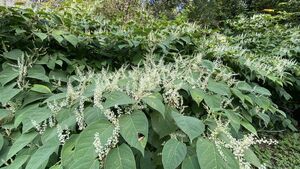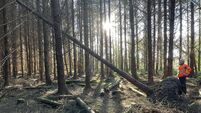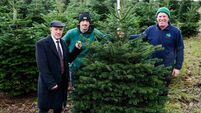Green Fingers: Which plants are the invasive species

Japanese Knotweed tears up concrete paths, walls and foundations.
We are living in an ever-increasing pace of life and it is difficult to keep up at times. The introduction and subsequent rise of digital and electronic technology has become part and parcel of our daily lives and it has become indispensable to most generations.
It was not that long ago that the first mobile phones, about the size of a loaf of bread, were seen attached to an owner's face and they, proud as punch, would ring anyone up on their land-line, and roar that they were ringing from a mobile phone at the ploughing match or similar venue.
From those early heady days, electronic devices are being mass-produced and improved constantly, and sometimes are even out of date on the day you bought them.
The older generation, not having experienced this electronic invasion, have become divided as to whether to learn these new techniques or just not bother, saying they can manage without it at this stage of their lives.
The vast majority of plants that we grow in our gardens are alien or non-native and are well-behaved.
There are a few that have been shown to be more prolific than others and they were discarded outside the garden where they spread if conditions were favourable and some have destroyed natural habitats.
It is only in recent times that we are becoming aware of these plants, which include Japanese Knotweed (Fallopia japonica), Giant Rhubarb (Gunnera tinctoria), Giant Hogweed (Heracleum mantegazzianum) and Himalayan Balsam (Impatiens glandulifera), and the common rhododendron (Rhododendron ponticum).
Perhaps the best-known alien invader is Japanese Knotweed, the dangers of which are shouted about throughout the media with gay abandon as it tears up concrete paths, walls and foundations.
This plant has been around for over a hundred years and has not engulfed whole landscapes but it has become a nuisance throughout the country at a local level, including the counties of the South East.
This plant was introduced from around Turkey and planted as an ornamental plant in the landscape but has spread in some areas, such as West Waterford and, of course, in Kerry. It is a wonderful sight when in bloom and much enjoyed by tourists and local people alike but its growth excludes all other native plants and therefore destroys the natural habitat.
There are many native plant species that could be considered invasive, like bindweed, and some even destroy or reduce habitats, such as gorse. But because they are native we do not shout about them and instead reserve our emotions to the non-native invasive plants.
It is not impossible to eradicate any invasive plants and it can be done by anyone but it might take time depending on where it is growing. The priority should be to take steps to eradicate it when it is seen.
Growth in some vegetables is rampant now so do get the most out of your plot by harvesting them as they reach maturity, as others are struggling and will not come to anything.
Some like beetroot can have some of their top growth used in salads before digging them up and enjoying the roots.
Others like courgettes, beans and peas need regular picking as leaving them mature stops the plant from producing more.
If you have any comments or queries you are welcome to share them with me on 051 384273 or orchardstowngardencentre@hotmail.com and if of general interest I will include it in a future article.






